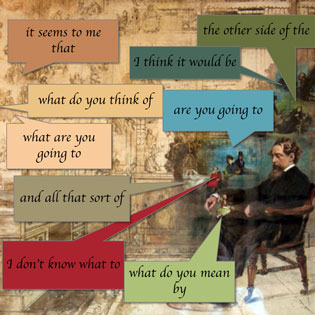
Speech bundles in the 19th century novel
Michaela Mahlberg, University of Birmingham.
0000-0002-4598-8011

Peter Stockwell, University of Nottingham.
0000-0002-4376-6853

Viola Wiegand, University of Birmingham.
0000-0001-6746-6620

Anthony Hennessey, University of Birmingham
In fiction, how characters speak plays an important role in how ‘real’ they appear to the reader.
Speech in fiction is not exactly like real spoken language. The ‘uhms' and ‘errs’, unclear words or overlap would make a narrative very difficult to read.
But there are repeated sequences of words, such as ‘it seems to me that’, ‘I think it would be’, ‘I don’t know what to’, ‘and all that sort of’ that are found both in fictional speech and in real spoken language.
This article shows how corpus linguistic methods, i.e. computer-assisted methods for the analysis of digitized texts, can help to identify similarities between real and fictional speech.
The research uses the freely available web application CLiC that allows users to search all of Dickens’s novels and other sets of texts mainly from the 19th century.